
The efficient use of natural resources is critical to sustainability. The industry uses advanced technologies to increase production yield rates and to facilitate the use of co-products. Steel’s advantage is that it is 100 percent recyclable and can be reused infinitely. As a result of the intrinsic recyclability of steel, the value of the raw materials invested in steel production lasts far beyond the end of a steel product’s life.
Raw materials in steelmaking
Key raw materials needed in steelmaking include iron ore, coal, limestone, and recycled steel.
The two main steel production routes and their related inputs are:
♦ Route 1: The integrated steelmaking route, based on the blast furnace (BF) and basic oxygen furnace (BOF), which uses iron ore, coal, limestone, and recycled steel. On average, this route uses 1,370 kg of iron ore, 780 kg of metallurgical coal, 270 kg of limestone, and 125 kg of recycled steel to produce 1,000 kg of crude steel.
♦ Route 2: The electric arc furnace (EAF) route uses primarily recycled steels and direct reduced iron (DRI) or hot metal, and electricity. On average, the recycled steel-EAF route uses 710 kg of recycled steel 586 kg of iron ore, 150 kg of coal and 88 kg of limestone and 2.3 GJ of electricity, to produce 1,000 kg of crude steel.
Around 70 percent of total global steel production relies directly on inputs of coal via the BF/BOF route. In 2017, about 1.2 Gt of crude steel was produced in BOFs, which required the output of about 1.1 Gt of BF (hot metal/pig iron) and about 200 Mt of scrap.
In 2017, global EAF output accounted for about 30 percent of global steel production (around 480 Mt), which required the output of about 60 Mt BF, 90 Mt of direct reduced iron (DRI) and 380 Mt of scrap.
Steelmaking materials markets
This story is from the October 2019 edition of Steel Insights.
Start your 7-day Magzter GOLD free trial to access thousands of curated premium stories, and 8,500+ magazines and newspapers.
Already a subscriber ? Sign In
This story is from the October 2019 edition of Steel Insights.
Start your 7-day Magzter GOLD free trial to access thousands of curated premium stories, and 8,500+ magazines and newspapers.
Already a subscriber? Sign In

Steel's Net Zero mission
The country’s commitment to achieving Net Zero within a targeted timeframe will now propel its steel sector towards a sustainable future in line with global trends.

Fuel Price Hike, Supply Chain Disruption Hurt Festive Sales
Supply chain disruptions and fuel price hikes have hurt festive sales in a big way as most auto majors posted decline in sales in October.

Seaborne coking coal offers remain range-bound
Seaborne coking coal offers moved in a narrow range in October amid global supply tightness and healthy spot demand.
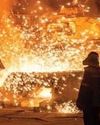
Global crude steel output down 8% in September
China manufactured 74 mt in September, fall of 21% y-o-y while India’s production went up by 7% to 10 mt.
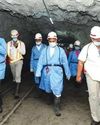
MOIL embarks on expansion projects
“Even though our country is blessed with manganese ore reserves, we import 50% of the domestic requirement. We have to lower our import dependence and save precious foreign exchange.” Ram Chandra Prasad Singh, Steel Minister
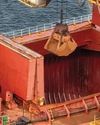
Iron ore handled by major ports down 17% in H1
The 12 major Indian ports handled 27 mt of iron-ore during H1 of 2021, down by 17% from 33 mt recorded for the corresponding period of previous year.
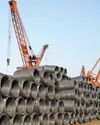
Shrinking China output to boost India exports
“In the third quarter of 2021, the company actively responded to the pressure from external policies, such as production curtailment and dual control system on energy consumption and intensity, as well as coal resource shortage and surging prices.” Baoshan Iron and Steel Co Ltd
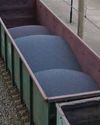
Indian Railways' iron-ore handling up 25% in H1
Indian Railways in April-September of 2021 (H1) transported 84 mt of iron ore, up by 25% over 67 mt during April-September 2020.
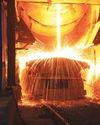
September crude steel production up 7.2% y-o-y
India’s crude steel production in September 2021 grew 7.2 percent to 9.547 million tons (mt) over September 2020 but was down by 3.2 percent from August 2021 output, provisional steel ministry data showed.

“Five enablers: way forward to sustainable cleaner steel”
Right and scalable technology, appropriate policy guidance by government, access to finance to fund transition, willingness of customers to pay for cleaner products and infrastructure for use of new technologies are the need of the hour for the sustainable and cleaner steel industry, according to Madhulika Sharma, Chief Corporate Sustainability, Tata Steel.